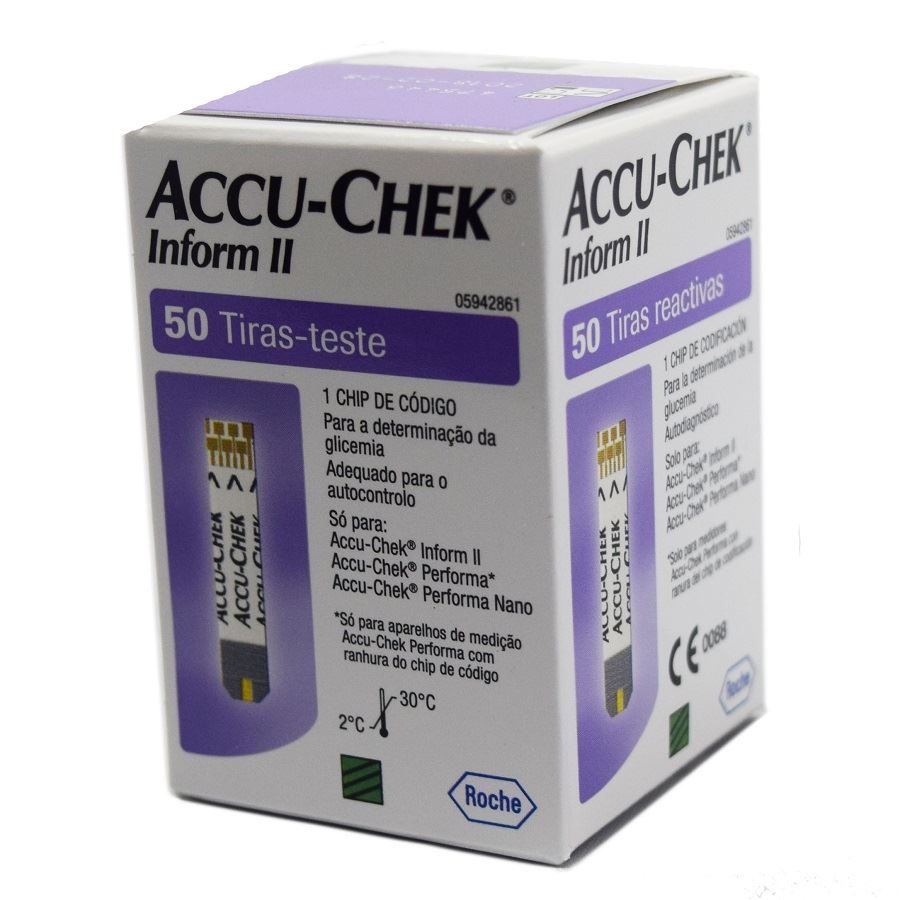


HbA1c POCT is not common in Dutch general practices, but it has shown to result in clinical effectiveness in diabetes care in Australian general practices. In addition to glucose, glycated haemoglobin A1c (HbA1c) POCT can contribute to better prevention, detection, and monitoring of the disease and possible complications.
#Accu chek inform ii linearity professional
Although there are high-quality, professional POCT devices, most primary care professionals still use less reliable consumer tests that are meant for individual monitoring, with accepted 15% variation to reference test results. In diabetes care, glucose is routinely measured for early detection and monitoring of patients with diabetes. Patients and healthcare professionals are generally satisfied with POCT. Moreover, the fingerstick test procedure is less burdensome for patients than a venepuncture and patients do not have to travel to an external hospital laboratory. The rapid availability of the test result during the patient encounter increases the potential for patients and healthcare providers to start using POCT in their practice. POCT is defined in many ways, but is mostly used for laboratory testing to support clinical decision making, which is performed by a qualified member of the practice staff nearby the patient, during or very close to the time of consultation, to help the patient and physician to decide upon the best suited approach, and of which the results should be known at the time of the clinical decision making.

To guide the diagnostic process, general practitioners (GPs) increasingly ask for point-of-care testing (POCT) solutions, as a replacement for sending patients to an external laboratory or hospital to perform blood test. Further research, with a random selection procedure of practices and patients and in other regions and countries, is recommended to confirm these findings. Patients, nurses and GPs expressed (very) positive first experiences after introducing HbA1c and professional glucose testing on two high-quality POCT devices in their own general practices. Patients, nurses and GPs generally expressed they wanted to continue performing these POC tests in routine diabetes care. Perceived disadvantages were the time required to regularly calibrate the devices and the extension of the consultation time because of the test. Both nurses and GPs had confidence in the test results and indicated they experienced a higher patient satisfaction than with regular blood tests. Almost all nurses indicated to have sufficient knowledge and skills to perform the test. Patients were most positive about the location (in the GPs’ office) and execution of the POC test (by their own nurse), and the speed of the test result. Patients, nurses and GPs were generally (very) satisfied with the novel POC tests. Response rates varied between 24 and 56%. For professional glucose POCT, 30 patients, 17 nurses and 8 GPs responded. For HbA1c POCT, 84 patients, 29 nurses and 11 GPs filled in the questionnaires. ResultsĪ total of 1551 fingerstick blood POC tests were performed (1126 HbA1c 425 Glucose). Descriptive data analyses were performed. Patients filled in the questionnaire immediately after the test nurses and GPs after a minimum period of three months from the starting date. HbA1c and professional glucose POCT was introduced after training and under day-to-day quality control. MethodsĪ cross-sectional observational study using paper questionnaires for patients, nurses and general practitioners (GPs) in 13 general practices in the Netherlands. Our aim was to get insight into the first experiences of patients and healthcare professionals after introducing quality-controlled HbA1c and professional glucose POCT in diabetes care in their own general practices. The rapid availability of the test result during the patient encounter increases the potential for patients and care providers to make a direct and joint decision on disease management.

Point-of-care testing (POCT) is increasingly used in primary care.


 0 kommentar(er)
0 kommentar(er)
